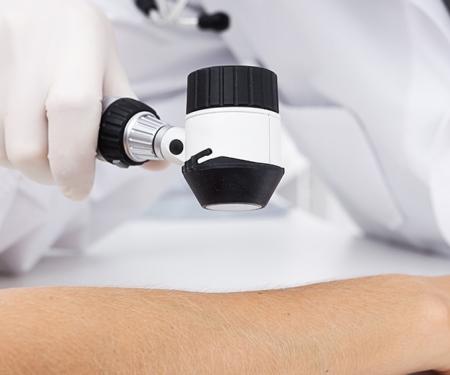Surgery to remove the tumor is the most common treatment for early stage skin cancers. Surgical procedures for basal cell and squamous cell skin cancers may include standard surgery or Mohs surgery, as well as reconstructive surgery if needed. Fox Chase surgical oncologists are skilled in Sentinel lymph node biopsies, cervical, axillary, and inguinal lymph node dissections. We have experience in robotic and minimally-invasive approaches to inguinal lymph node dissections.
Reconstructive Surgery
Reconstructive surgery for skin cancer is used to rebuild areas which may have been damaged by the tumor or by surgery to remove the tumor. Reconstructive surgery may also be necessary when surgery is used instead of radiation therapy to remove skin cancer on the nose, eyelids, lips, or ears. Reconstructive surgery can help restore a natural appearance, improve the look and feel of scars, and ease pain or discomfort. Fox Chase plastic surgeons work closely with our dermatologists to achieve the best possible results. They have one of the largest experiences regionally with free flaps and microvascular surgery.
For a large tumor that cannot be removed with surgery or one that has spread beyond the top layer of skin to the lymph nodes or nearby tissue, patients may need other skin cancer treatments, such as radiation or chemotherapy, in combination with reconstructive surgery. These more complex treatment approaches are reviewed and planned in collaboration with other specialists on the Fox Chase skin cancer treatment team.
Isolated Limb Infusion
We have expertise in performing isolated limb infusion for in-transit melanoma. It’s a minimally-invasive procedure for delivering high doses of chemotherapy to treat recurrent in-transit disease in a limb, including melanoma and sarcoma.
Mohs Surgery
Mohs surgery is a procedure in which skin cancer is removed in several steps. It is one of the most successful techniques for treating many basal cell and squamous cell skin cancers.
Radiation Therapy
Radiation therapy uses high-energy beams to target skin cancers. Many basal cell and squamous cell skin cancers can be successfully treated with electron beam radiation. Since this type of radiation therapy targets only the top layers of skin, it is less likely to affect deeper tissues or organs.
Radiation therapy can also be effective for treating large tumors or those located in areas that cannot be removed surgically (such as on the eyelid, the tip of the nose, or the ear). In cases where cancer cells may be left after surgery and further surgery is not possible, radiation therapy can be added to reduce the risk that the cancer will come back.

